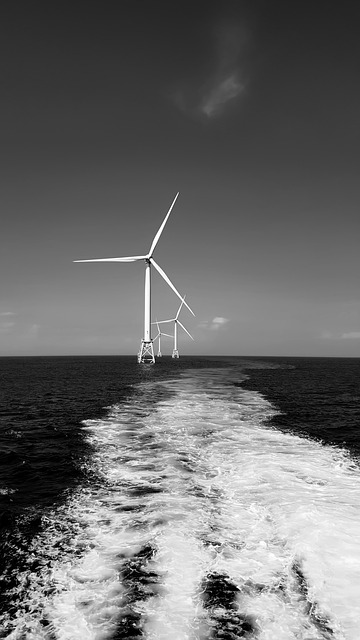The Nature of Wind
Wind is an omnipresent force in our natural world, a vital element of Earth’s weather and climate systems. It is the movement of air, a gas mixture that primarily consists of nitrogen (approximately 78%), oxygen (around 21%), and trace amounts of other gases. Understanding wind involves not just recognizing its causes and effects but also appreciating its significance in both natural ecosystems and human activities.
What Causes Wind?
At its core, wind is caused by the uneven heating of the Earth’s surface by the sun. This solar energy warms the ground, which in turn heats the air above it. Warmer air is lighter and rises, creating an area of lower pressure. Cooler air, being denser, rushes in to fill this gap, resulting in what we feel as wind. The larger the temperature difference between two areas, the stronger the wind will be. Other factors influencing wind include:
Pressure Systems
Wind is heavily influenced by the pressure systems that develop in the atmosphere. High-pressure systems, where the air is descending, generally bring calm and clear weather. Conversely, low-pressure systems, where air is ascending, can lead to stormy and unsettled conditions. The movement of air from high to low-pressure areas is what we call wind.
Topography
The physical features of the Earth’s landscape, such as mountains, valleys, and bodies of water, also play a significant role in shaping wind patterns. For instance, as wind encounters mountains, it can be forced to rise, leading to cooling and potentially the creation of clouds and precipitation. Similarly, valleys can channel wind, resulting in stronger gusts.
Rotation of the Earth
The Coriolis effect, which results from the Earth’s rotation, affects wind direction. In the Northern Hemisphere, winds are deflected to the right, while in the Southern Hemisphere, they are deflected to the left. This effect is crucial in the formation of large-scale wind patterns, such as trade winds and westerlies.
Types of Wind
Wind can be categorized in several ways depending on its characteristics, scale, and effects. Some of the most notable types include:
Global Winds
These are large-scale wind patterns that affect weather patterns across whole continents and oceans. The primary global wind belts include:
- Trade Winds: These winds blow from east to west in the tropics and are crucial for maritime navigation.
- Westerlies: Found in the mid-latitudes, these west-to-east winds drive weather patterns across many regions.
- Polar Easterlies: These cold winds blow from the east near the poles and often contribute to the cold weather experienced in those regions.
Local Winds
Localized winds can occur due to geographical features and are typically short-lived. Examples include:
- Sea Breezes: Occur in coastal areas where cooler air from the sea moves inland, providing relief on hot days.
- Land Breezes: Occur at night when the land cools faster than the sea, causing air to move from land to sea.
- Valley Breezes: Develop in the daytime as warm air rises from the valley floors.
- Mountain Breezes: At night, cooler air descends from the mountains into the valleys.
Strong Winds
Some winds reach extraordinary speeds and can cause significant damage. Notable strong winds include:
- Hurricanes: These are intense tropical storms with sustained winds exceeding 74 miles per hour.
- Typhoons: Similar to hurricanes but occurring in the western Pacific Ocean.
- Tornadoes: These are violent windstorms characterized by a rotating, funnel-shaped cloud, capable of winds exceeding 300 miles per hour in the most severe instances.
Effects of Wind
Wind plays a critical role in various natural processes and influences human activities in many ways:
Environmental Impact
Wind contributes to the dispersal of seeds and pollen, plays a role in the erosion of geological formations, and helps to regulate temperatures. Wind also facilitates the formation of waves and currents in oceans, affecting marine ecosystems.
Weather and Climate
Wind patterns influence regional climates and weather systems. They can bring moisture to dry areas, create storms, or change temperatures rapidly. Meteorologists study wind patterns to predict weather, utilizing data on wind speed and direction.
Human Activity
Wind has a profound impact on human endeavors:
- Agriculture: Farmers rely on wind for pollination and for drying processes in crop production.
- Aerodynamics: Engineers must consider wind effects in the design of buildings, bridges, and other structures, particularly in hurricane-prone regions.
- Wind Energy: Harnessing wind energy has become increasingly popular as an alternative to fossil fuels, with wind farms proliferating around the world.
Wind in Culture and History
Wind has not only been a physical force but also a source of inspiration in art, literature, and culture. Many cultures have personified wind in mythology, often depicting it as a living entity with fierce or gentle qualities. In ancient Greece, the gods of the winds were known as the Anemoi, each representing different directional winds.
Literature is replete with references to wind, symbolizing change, freedom, or chaos. For instance, in the poetry of John Keats and Percy Bysshe Shelley, wind serves as a metaphor for the passage of time and the fleeting nature of beauty.
Conclusion
Wind, a fundamental aspect of our environment, influences not only the climate and weather patterns but also has implications for ecosystems and human activities. Its multifaceted nature encompasses a wide range of phenomena, from gentle breezes to violent storms. As our understanding of wind continues to evolve, especially in the context of climate change, it remains an essential element of life on Earth, shaping our landscapes, weather, and even our cultural narratives.










